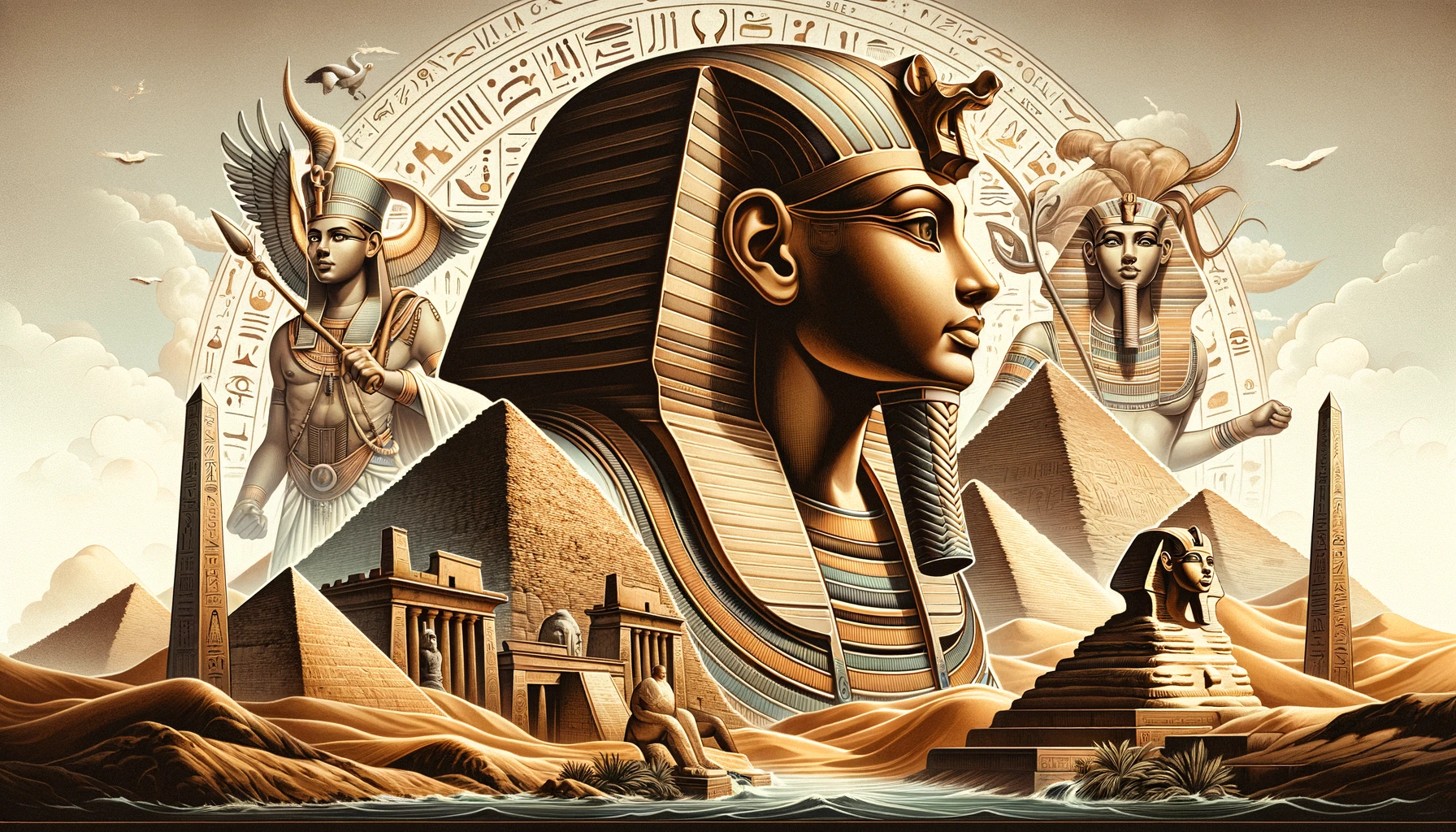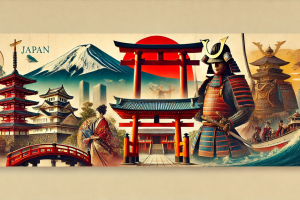Famous Rulers of Ancient Egypt: Cleopatra, Tutankhamun, and the Pharaohs Who Shaped History
Ancient Egypt stands as one of the most remarkable civilizations in human history. Stretching over 3,000 years, Egypt was ruled by pharaohs who shaped its destiny, leaving behind a legacy of monumental structures, rich mythology, and timeless rulers. From the Pyramids of Giza to the intricate religious beliefs of the Egyptians, history continues to unravel the mysteries and grandeur of this ancient society. In this blog, we will explore some of the most influential Pharaohs of Egypt, focusing on iconic figures like Cleopatra, the discovery of Tutankhamun’s tomb, and the rise of powerful dynasties.
The Pharaohs of Egypt: Guardians of Ancient Egypt’s Legacy
The pharaohs of Egypt weren’t just rulers—they were seen as gods on Earth, responsible for maintaining order and harmony (known as “Maat”). They played a crucial role in Egyptian history, shaping the nation’s culture, religion, and political landscape. Over the centuries, many pharaohs left an indelible mark on the world, with their names still resonating in modern times.
Among the most famous pharaohs is Ramses II, also known as Ramses the Great, who ruled for over 60 years. His reign is noted for major military campaigns, the expansion of the Egyptian empire, and the construction of monumental temples like Abu Simbel. However, no exploration of Egypt’s pharaohs would be complete without examining the lives of Cleopatra, Tutankhamun, and their roles in ancient Egypt’s storied past.
Cleopatra: The Last Pharaoh of Egypt
When we think of Cleopatra, we often picture a glamorous queen who ruled with cunning and charm. Known for her beauty and intellect, Cleopatra VII was the last active ruler of the Ptolemaic Kingdom of Egypt. She ruled during a tumultuous period, facing challenges from internal strife and the growing power of Rome. Cleopatra’s history is often intertwined with her relationships with powerful Roman figures like Julius Caesar and Mark Antony.
Cleopatra was fluent in several languages and had a deep understanding of politics, which helped her secure her reign. She wasn’t just a figure of romance; she was a strategic leader who sought to preserve Egypt’s independence. Despite her efforts, Cleopatra’s reign ended in 30 BCE, following her defeat by Octavian (later Augustus), which marked the end of the pharaonic era and Egypt’s integration into the Roman Empire.
Cleopatra’s life has fascinated historians and artists alike, making her one of the most famous figures in ancient Egyptian history. Her legacy continues to inspire, as evidenced by the numerous books, films, and academic works dedicated to her reign.
The Discovery of Tutankhamun’s Tomb: A Window into Ancient Egypt
The story of Tutankhamun is one of the most famous discoveries in archaeology. Known as the “Boy King,” Tutankhamun ascended to the throne at a very young age and ruled for only nine years before his untimely death. Although his reign was short, Tutankhamun’s tomb discovery in 1922 by British archaeologist Howard Carter made him one of the most well-known pharaohs in history.
Tutankhamun’s tomb, located in the Valley of the Kings, was remarkably well-preserved and contained a wealth of treasures, including his famous gold funerary mask. The tomb gave historians and archaeologists valuable insight into ancient Egypt’s mummification processes, burial customs, and the wealth of the Egyptian pharaohs. The discovery has since become a symbol of Egypt’s golden age and continues to draw fascination from people worldwide.
Egyptian Gods and Goddesses: The Divine Pantheon of Egypt
The religious life of ancient Egypt was incredibly rich and diverse, with a pantheon of Egyptian gods and goddesses that influenced every aspect of daily life. These deities were thought to control natural forces and human activities, such as the flooding of the Nile, fertility, and the afterlife. Among the most famous gods are Ra, the sun god; Osiris, the god of the underworld; and Isis, the goddess of magic and motherhood.
Egyptians believed that their pharaohs were descendants of the gods and served as intermediaries between the divine and mortal realms. Egyptian mythology is a complex system of stories that explained the creation of the world, the cycle of life and death, and the pharaoh’s role in maintaining cosmic order.
The religious practices also included the elaborate process of mummification in Egypt, where the body was carefully preserved for the afterlife. This practice was deeply rooted in the Egyptians’ belief in immortality and the journey to the afterlife. They believed that the physical body needed to be intact for the soul to successfully navigate the afterlife.
The Pyramids of Giza: Eternal Monuments of the Pharaohs
When discussing ancient Egypt history, the Pyramids of Giza are undoubtedly the most iconic symbols of Egyptian architectural achievement. Built during the Fourth Dynasty, around 4,500 years ago, these monumental structures were constructed as tombs for the pharaohs. The Great Pyramid of Giza, built for Pharaoh Khufu, stands as one of the Seven Wonders of the Ancient World.
The pyramids reflect the Egyptians’ advanced understanding of mathematics and engineering. Their construction required massive labor forces and an intricate system of planning, highlighting the power and wealth of Egypt during this period. The pyramids also served as an eternal resting place for the pharaohs, ensuring their safe passage to the afterlife.
The Role of the Nile River in Ancient Egypt
The Nile River was the lifeblood of ancient Egypt. Flowing through the heart of the country, the Nile provided the resources needed for the Egyptian civilization to thrive. Its annual flooding brought fertile soil, allowing Egyptians to cultivate crops and sustain large populations. The river also served as a key transportation route, facilitating trade and communication between different regions of the country.
The significance of the Nile extended beyond agriculture. It played a central role in Egyptian mythology, with the gods closely tied to the river’s life-giving waters. For instance, the god Hapi was believed to control the flooding of the Nile, ensuring abundance for the people of Egypt.
Egyptian Hieroglyphics: The Ancient Language of Symbols
One of the most distinctive features of ancient Egypt history is its unique system of writing: hieroglyphics. Used primarily for religious texts and monumental inscriptions, Egyptian hieroglyphics were a complex system of pictorial symbols representing sounds, concepts, and objects.
The deciphering of hieroglyphics by Jean-François Champollion in the 19th century, using the Rosetta Stone, opened up a treasure trove of knowledge about ancient Egypt. Hieroglyphics provided insight into Egypt’s religious practices, historical events, and the day-to-day life of its people. The rediscovery of this writing system allowed scholars to better understand the pharaohs’ reigns and their achievements.
The Timeless Legacy of Ancient Egypt
The history of ancient Egypt is vast and multifaceted, stretching from the lives of Cleopatra, Tutankhamun, and the great pharaohs of Egypt to the construction of the Pyramids of Giza, and the intricate religious practices that defined the civilization. Each element, from the significance of the Nile River to the discovery of Tutankhamun’s tomb, reveals more about this powerful and enigmatic civilization.
Ancient Egypt continues to fascinate and inspire people across the world. Whether you’re intrigued by its pharaohs, its mythology, or its monumental structures, Egypt’s history offers endless avenues for exploration. For more in-depth information about Egyptian history and its rich legacy, visit Regent Studies.
The pharaohs of Egypt, the grandeur of Cleopatra’s history, and the wonders of Tutankhamun’s tomb discovery continue to captivate the world, ensuring that the legacy of ancient Egypt remains as timeless as the pyramids themselves.




